|
|
GeoAstro Applets |
Astronomy |
Chaos Game |
Java |
Miscel- laneous |
A self-aligning sundial
| This horizontal sundial combines two different
principles and is self-aligning to true north. - The first gnomon is located in the center of the dial and perpendicular to the dial plate. Red lines are representing the azimuth angle of the Sun. - A second gnomon is ponting to the north pole (i.e. parallel to the Earth's axis). Blue lines are representing the hour angle angle of the Sun. 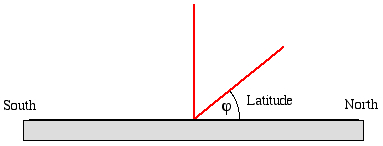 The Sundial Garden of the Deutsches Museum (Munich) is showing this kind of dial in action, see photo below. The use will be easy using solar time and separating the time scales. |
 |
Check the
"Shift" box to separate the azimuth scale (red) and
the hour angle scale (blue). |
 |
Use the
checkbox "App." to swich between apparent (solar) time
and standard time (boy unchecked). The standard time is taking into account of the equation of time and the difference from the standard meridian |
|
|
Check your time zone offset and select the standard time. |
|
|
Click the applet first! |
 |
Select "Az" or/and "HA" to display the azimuth or/and the hour angle lines. |
  |
Select "Half
1" for Dec 21 to June 21, or "Half
2" for Jun 21 to Dec 21, or Jan 1 to Dec 31 (both
boxes checked, or none). Pay attention to the messages. |
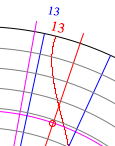 |
The magenta
circle (or arc) indicates the date. The red pointer is related to the red lines of the azimuth scale, the magenta pointer is used for the blue lines of the hour angle scale. |
|
|
You may use the keys "y", "m", "d", "h", "n" to increase the year, month, date, hour, minute, or Shift key and "y", "m", "d", "h", "n" to decrease the year, month, date, hour, minute ! |
| Check the box to choose apparent (solar) time, uncheck for standard time. | |
 |
Click into the spider web to get the date and the azimuth, if "Shift" is unchecked. |
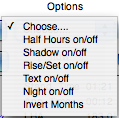 |
Select from
the "Options" menu. "on/off" items are working in toggle mode. |
 |
The times of
transit, sunrise, and sunset are standard time. Sun's
elevation is blue if below horizon. |
| The red frame of the applet area is a square (700 x 700 pi |
The
polar
gnomon is a triangle (latitude 51.6° N).
Aug 22 at 10:30 apparent time (12:01 CEST):
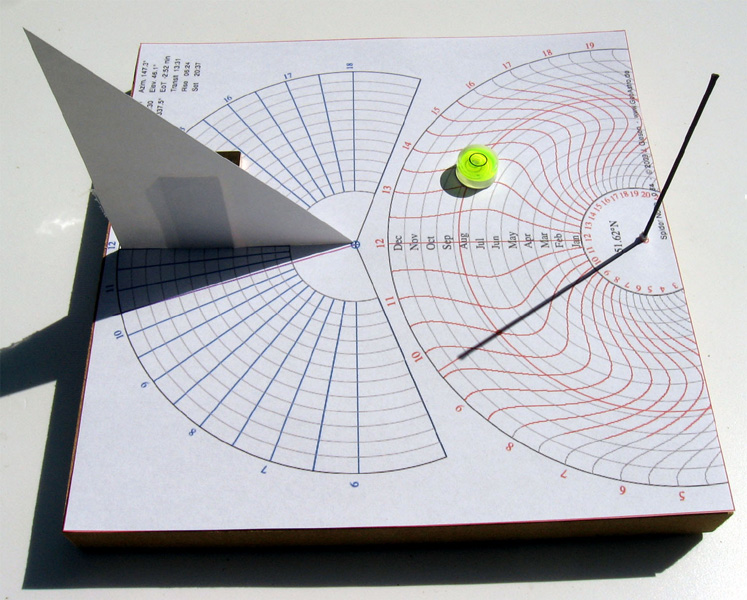
Aug
18 at 10:00 local standard time:

The azimuth and hour
angle lines are quite complex,
and the time scales difficult to read.
The
angular
distance of the shadows reaches a maximum at 3 hours
before/after local transit:
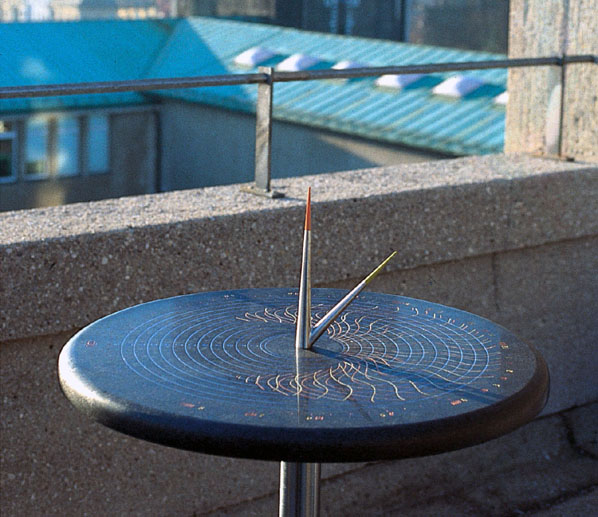
North Finder in the Sundial Garden of the
Deutsches Museum (Munich),
calculated and constructed by Yves Opizzo and Christian
Tobis.
(Photo with kind permission of Yves
Opizzo)
The self-aligning Foster-Lambert sundial
Applets: Ancient Sundials and
Quadrants
|
|
|
The Sundial
Primer: Spider Sundials Sonnenuhren-Spinne (Wikipedia) Spinnensonnenuhr
/ Cadran solaire du type araignée (Yves Opizzo) |
Last Modified: 2023, Oct 06
© 2009-2023 Juergen Giesen
![]()



